The most popular graphics brand in 3DMark benchmarking, ASUS, recently held a seminar that shows just what the recently-launched STRIX GTX 980 Ti graphics card is truly made of and what exactly makes it a commendable upgrade. The company highlighted some very technical breakdown of their new innovations and what these would mean for the performance of the card.
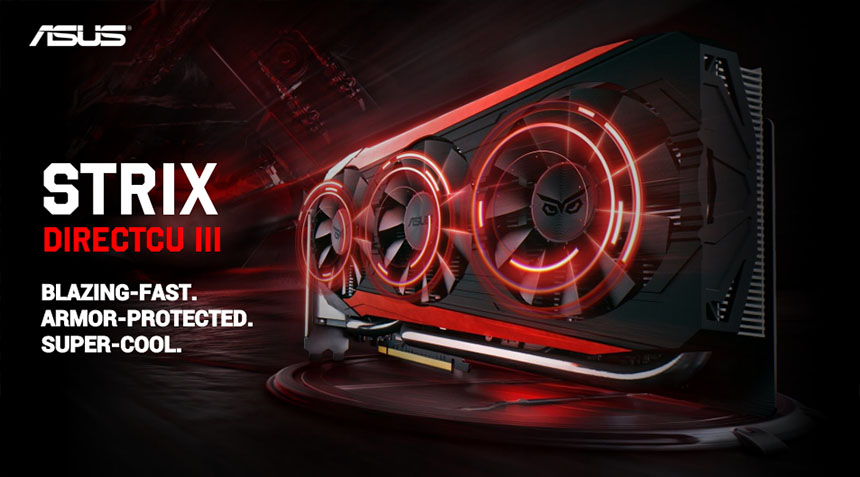
Teased at Computex early this year and then officially launched last July, the ASUS STRIX GTX 980 Ti graphics card boasts a brand-spanking new DirectCU III cooler that features a large heatsink for what the company says targets a direct and more efficient heat transfer if pitted against other graphics cards.
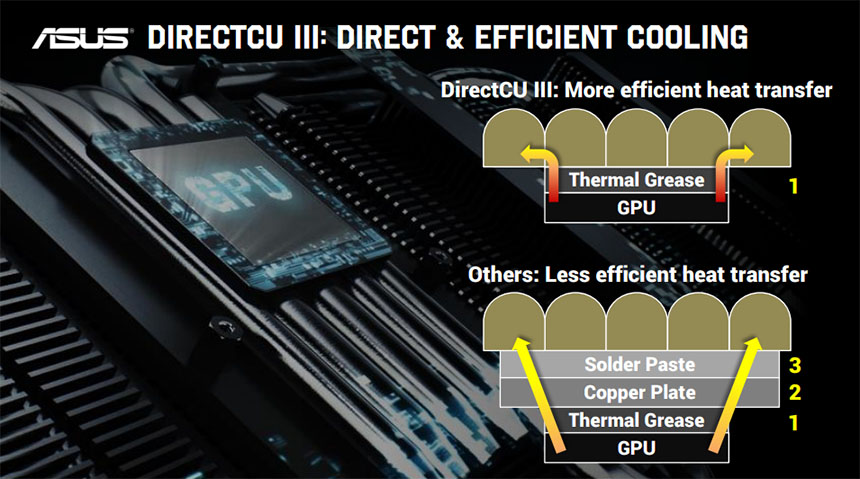
It’s also got numerous heatpipes with the primary ones sized at 10mm and 8mm, with secondary 6mm heatpipes. The primary pipes has a QMAX of 70W~100W and dissipates 70% of the heat, while the secondary ones have QMAX of 40W~50W and moves the remaining 30% of the heat.
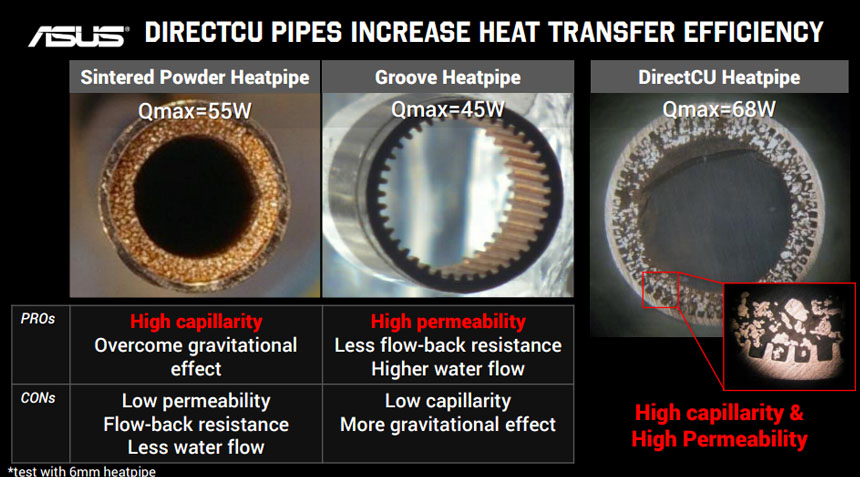
In addition, these DirectCU pipes now have increased heat transfer efficiency thanks to its high capillarity and high permeability capabilities. This came from taking only the best attributes from sintered powder heatpipes and groove heatpipes.
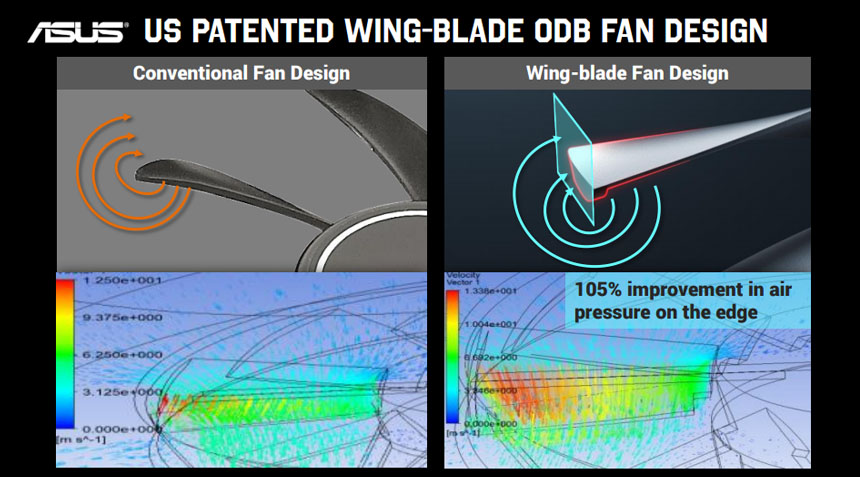
What ASUS is also front-lining during the technical seminar is the graphics card’s wing-blade fan design that produces a 105% improvement in air pressure on the edge for cooling down the rig. These trio of fans have a larger 250.04mm size (compared to 198.29mm size of conventional designs) and a 37% smaller projected gap area of 80.89mm (as opposed to the others’ 128.44mm)

Moreover, the company boasts that the manufacturing process of these graphics cards are top-notch mainly because they’ve already switched to 100% automation — meaning their products are 100% machine-built, is specific down to the very last detail, and is free from human error in the process of production.
Below are some of the innovations ASUS has introduced in terms of components modification and manufacturing reformation:
Components modification in all aspect:
Manufacturing reformation:
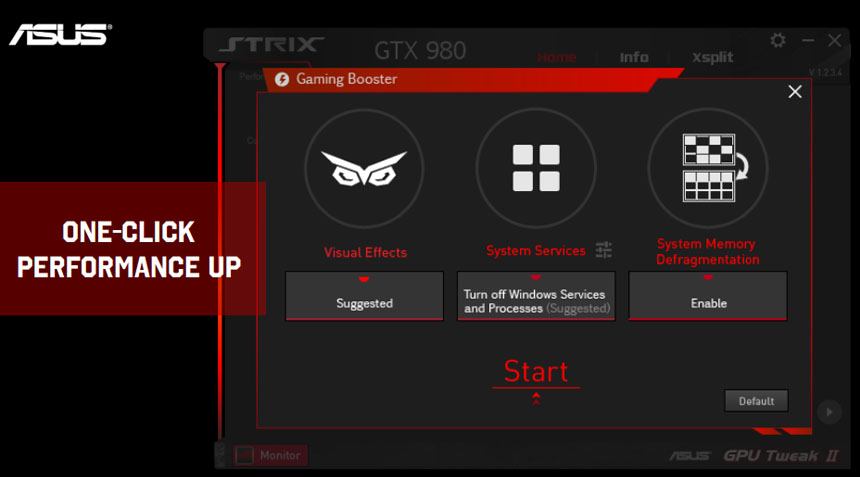
Also a part of the bundle, users will have access to GPU Tweak II which now has a new and gamer-friendly interface. Here you can choose between different modes like overclocking, gaming, etc and display factual data while the rig is in use.
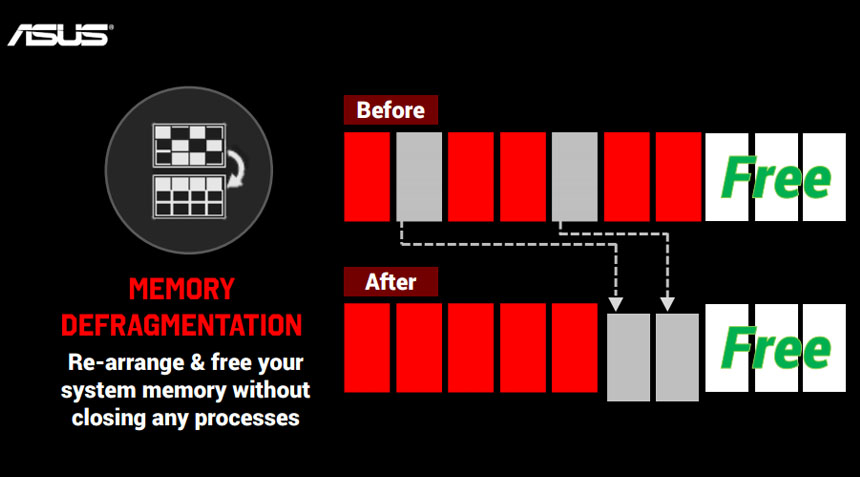
There’s also the Gaming Booster function that tweaks your computer’s settings to boost the performance of the game you’re running. Additionally you’ll also be able to defrag your memory without having the need to stop everything you’re doing and close all the processes. Just run the defragmentation process and it would sort out your files for an overall better performance of your machine.
So that’s basically it for this new graphics card. To get to know more of the company’s gaming components, you may visit the official ROG website here.

YugaTech.com is the largest and longest-running technology site in the Philippines. Originally established in October 2002, the site was transformed into a full-fledged technology platform in 2005.
How to transfer, withdraw money from PayPal to GCash
Prices of Starlink satellite in the Philippines
Install Google GBox to Huawei smartphones
Pag-IBIG MP2 online application
How to check PhilHealth contributions online
How to find your SIM card serial number
Globe, PLDT, Converge, Sky: Unli fiber internet plans compared
10 biggest games in the Google Play Store
LTO periodic medical exam for 10-year licenses
Netflix codes to unlock hidden TV shows, movies
Apple, Asus, Cherry Mobile, Huawei, LG, Nokia, Oppo, Samsung, Sony, Vivo, Xiaomi, Lenovo, Infinix Mobile, Pocophone, Honor, iPhone, OnePlus, Tecno, Realme, HTC, Gionee, Kata, IQ00, Redmi, Razer, CloudFone, Motorola, Panasonic, TCL, Wiko
Best Android smartphones between PHP 20,000 - 25,000
Smartphones under PHP 10,000 in the Philippines
Smartphones under PHP 12K Philippines
Best smartphones for kids under PHP 7,000
Smartphones under PHP 15,000 in the Philippines
Best Android smartphones between PHP 15,000 - 20,000
Smartphones under PHP 20,000 in the Philippines
Most affordable 5G phones in the Philippines under PHP 20K
5G smartphones in the Philippines under PHP 16K
Smartphone pricelist Philippines 2024
Smartphone pricelist Philippines 2023
Smartphone pricelist Philippines 2022
Smartphone pricelist Philippines 2021
Smartphone pricelist Philippines 2020